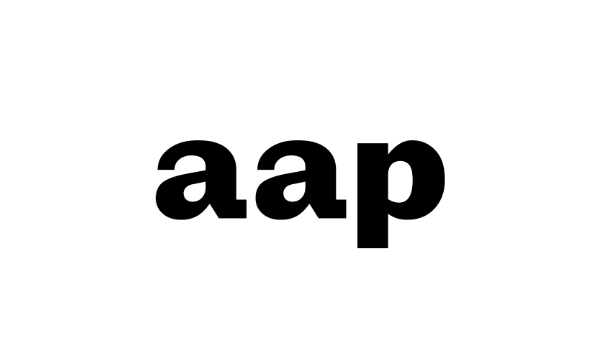
Stocks offering consistent and reliable double-digit yields are rare. They’re so rare that most of the ones I know operate in specific sectors like energy and real estate (REITs). So, finding one out in the market—especially ones that few people know about—can snag any income investor’s interest.
However, the reality is that many stocks with double-digit yields are oftentimes double-edged swords. Sure, you can get high dividends for a quarter to two, or more if you’re lucky. But eventually, weak fundamentals, declining earnings, industry shifts, and poor cash management topple such companies, leading to enormous dividend rate cuts and even more massive sell-offs. I’ve seen it repeatedly and identified some warning signs that can help investors avoid such portfolio calamities.
Dan Dubay, CFP® And Sr. Wealth Advisor at SignatureFD, LLC, agrees. According to Dubay, “If someone invests in a high-yielding stock but the company earnings are in decline and or they have a high debt load, they run the risk of dividends being cut and the price of the stock falling.”
So, today, don’t get fooled by high yields, and let’s discuss three high-yield stocks you might want to avoid.
How I Identified The Following Stocks
Barchart’s Stocks Screener is not only good for looking for stocks to buy. With the right criteria, you can also look for stocks to avoid. Here’s how I did it: first, I used the following filters:
- Market Cap: 10 billion and above. I’m looking for large and mega-cap companies that are offering higher yields, as they’re usually the ones investors flock to in times of uncertainty.
- Dividend Payout Ratio: 100% or more. The dividend payout ratio indicates how much of its earnings the company spends on paying dividends. The widely accepted healthy range for the payout ratio is around 35% to 55%. Meanwhile, companies that pay more than 70% of their earnings for dividends are often at risk of a cut. Above 100% is a red flag for investors.
- Annual Dividend Yield: 10% or more on a trailing twelve-month (TTM) basis. As mentioned, I’m looking for stocks that offer higher yields yet show signs of inability to maintain such yields.
With these filters set, I ran the screen and got exactly three companies:
I arranged the results based on which has the highest dividend yields. I usually discuss three companies on my lists, but I’ll exclude Smurfit WestRock for this particular analysis. Its high TTM yield is primarily due to a one-time cash payment of $5 when Smurfit Kappa merged with WestRock in 2024. So, both its yield and dividend payout ratio are distorted.
In any case, we still have plenty to discuss with the other two companies, so let’s get started with the first one:
Ecopetrol S.A. ADR (EC)
Ecopetrol S.A. is a vertically integrated energy company focused on the exploration, production, refining, transportation, and commercialization of crude oil, natural gas, and petrochemicals. The company is one of Latin America's largest oil and gas producers and heavily contributes to the region's energy infrastructure. The company’s subsidiaries include Cenit, Esenttia, Hocol, Ocenca, and Equion, operating primarily in Columbia.
Ecopetrol’s most recent dividend payment was on 06/25/24 for 75 cents per share. Unfortunately, the company’s dividend payment schedule and rate are all over the place, making predicting a forward yield tricky. However, if we base the yield on the payouts within the last twelve months, we get an impressive 18.59% yield based on current prices.
Unfortunately, that results in a massive 163.62% dividend payout ratio. Dubay adds, “The payout ratio is the key metric to see if the dividend is at risk. The price of the dividend is divided by earnings per share. If it is higher than 70%, an investor should probably look elsewhere.”
Indeed, that 63.62% over and above net earnings will have to come from somewhere, either from savings or it will have to be borrowed. Either way, it’s not a sustainable long-term practice and could indicate that the company is heading for a dividend cut soon. Furthermore, its unreliable payout schedule can be an issue for income investors like me, who want to know when their dividends will come.
The final nail in the coffin is the 2.14 average analyst score, signifying a moderate sell rating. So, if I were you, I’d stay away from EC stock for now.
BCE Inc (BCE)
BCE Inc. is a Canadian telecommunications and media company that provides services such as wireless, internet, TV, and media broadcasting under its Bell brand. It is one of Canada's largest communications companies, serving residential and business customers nationwide and offering data and voice services, Internet of Things services, cloud computing, and cybersecurity.
Being one of Canada's largest and most recognizable brands has quite a pull, and the high yields don’t hurt either. BCE Inc. currently pays a CA$3.99 annual forward dividend (US$2.78.) Based on its BCE stock’s current trading price, that represents a whopping 11.9% yield.
So why am I not rushing to buy BCE stock? Well, first, its payout ratio is a disturbing 222.85%. At this level, it’s not a matter of if the company will cut dividends but when.
Furthermore, BCE is aggressively expanding its network footprint: the company recently acquired US company Ziply Fiber for around US$3.6 billion. It’s going to need money to maintain its expansion plan, and, combined with its high payout ratio, I wouldn’t be surprised if the company cut its dividend entirely at some point soon.
Conclusion
Dividend investing is not all about yields. Income investors should always wonder where the company gets its money to pay dividends and how sustainable the dividend policy is. Otherwise, you might get stuck holding a previously high-yielding dividend stock, watching as its value and income dwindle away into nothing.







